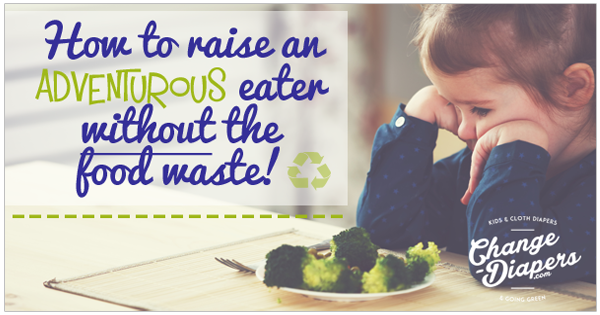
Note from Maria: After reading the referenced article, I asked Adina to write about things parents can do to solve this problem. After my experience taking the online feeding course, I knew she’d have great insight.
When every food penny counts, parents have more money at risk feeding kids. A recent NY Times article, A Hidden Cost to Giving Kids Their Vegetables (why poor children can’t be picky eaters) discussed some reasons for why poorer families don’t eat as many fruits and vegetables.
As if parenting today wasn’t already full of pressure, these days Pinterest and mommy food blogs have us thinking we need to raise full fledged foodies by Kindergarten. What? Your 4 year old wouldn’t rather eat “zoodles” (spiralized zucchini) than actual carb-rich noodles? How else are you going to avoid childhood obesity, poor grades, and lack of empathy if your kids don’t drink a green smoothie at breakfast and consume every color of the dye-free vegetable rainbow by 3pm?
If not another word about the importance of fruits and vegetables were written or spoken for the next 5 years, nearly every parent I know would still feel pressure to get their kids to eat according to some standard. Advice on this topic is rampant: Fruits and veggies, fruits and veggies, get your kids to eat fruits and veggies.
But how critical is it that our kids eat like veggie-holics and how does one accomplish this daunting task of teaching our kids to enjoy produce on a tight budget?
First I’d say that fruits and vegetables are indeed highly nutritious and loaded with vitamins, minerals, beneficial plant chemicals and fiber. All good things, there’s no denying it. But you know what else fruits and veggies are also rich in?
- weird combinations of textures (anything not in a fruit pouch)
- inconsistent flavors
- tartness
- bitter bits (Brussels sprouts, broccoli),
- squirts of juice (hello tiny tomatoes and mandarins)
- spiciness (eggplant, radishes)
- surprise discoloration (bruised bananas, 5-min old apple slices).
Let’s face it, fruits and vegetables can really be an acquired taste and for kids who are cautious about new things, it’s no wonder it takes them a while to warm up to many plant foods.
You know what’s never surprising? Crackers. And many other common childhood favorites.
Every veggie-promoting kids’ book and tv show tries to convince kids that spinach and broccoli and other vegetables are required for their growing big and strong. Because kids are super worried about their growth, right?
But here’s the thing. The most important thing kids need to grow is…calories. Vegetables are notoriously low in calories (why do you think diets push them so much?). So if you were a growing kid, just getting to know the world of food (that’s most kids through age 6 or 7), with a tiny stomach, what would you be more drawn to, a half cup of diced broccoli for a whopping 16 calories…or the equivalent sized slice of pizza, cheese & crackers, or PBJ? Why is it surprising that most kids prefer calorie-dense food over carrots, broccoli and spinach?

Research (1) even shows that growing kids have a naturally stronger affinity for sweets than adults do. Growth. Growth seeks calories. Veggies are usually not the most calorie-dense foods available. If your child isn’t a fruit or vegetable lover, take heart. Calories are most important to their growth, the rest is frosting (if only).
But most of you reading this probably still want to know how to help your kids along in their learning to eat a greater variety, including fruits and vegetables. So what’s the secret to accomplish this?
The secret is exposure: seeing, smelling, touching, knowing the names, and watching you eat all count as exposure. How many exposures does it take most kids to accept a new food? According to research, 8-15 times (2). But according to real life, anywhere from once to 300 times. With some foods a more selective eater may take years. My 4 year old who is a pretty typical eater has been has been exposed to lettuce (“leaves” as he calls it) and various salad greens for approx 3 years. And yet, he still considers himself “allergic to salad” — his words, not mine!
What’s often taken for granted, and recently brought to light by sociology doctoral student, Caitlin Daniel, is the cost of these food exposures for low income families.
If you’re food budget is tight and food waste is more than just a philosophical issue for you, you might be thinking exactly what sociologist Daniel found in her research: “I can’t risk the waste of 7 – 14 rejections (or 300) of all the fruits and veggies my kid won’t touch! That’s madness.”
A head of cauliflower or broccoli, a bag of Brussels sprouts, or a bunch of asparagus that’s rejected is money that could go toward a satisfying, sure-winner meal. Even well-to-do parents hate to waste food, but they can ride through that veggies-are-yucky period of feeding young kids because it doesn’t hurt financially.
Let’s say broccoli costs $1.49/lb and you’re buying for a family of 4. That will cost you nearly $3.00. If this is a new food and your 2 kids reject it, you’ve lost $1.50. On it’s own, perhaps this is no big deal. But multiply that by the number of recommended servings of vegetables per day and it starts to add up. What is a Mom to do with all those veggies?
I would like to propose that the answer lies in your overall feeding strategy. As kids reach the picky phase of eating and start to reject even foods they used to like, parents are at risk for going in one of two extremes to keep their family healthy and fed:
- Micromanagement of kids’ eating: coercion, bribes, games, threats, “no thank you bites,” “eat your broccoli before you get dessert,” etc.
- Catering & short-order cooking: Only serving what their kids already like–so at least they’ll eat.
If you micromanage, then eating the broccoli is a power struggle. You put a set amount on Liam’s plate and whatever he doesn’t eat is wasted. You feel great investment in those broccoli florets so you have no choice but to push and as you push he pushes back. Mealtimes are stressful.
If you just quit serving broccoli because Lisa won’t eat it, you save money because there’s no broccoli waste. However, there’s also no exposure.
There is a third strategy that saves you from the mealtime stress of fighting over each bite and keeps waste to a minimum (let’s face it, some waste is inevitable because…kids). This third strategy involves maintaining a clear division between your feeding job and their eating job: The Division of Responsibility (3).
Your job is to choose the food and their job is to eat — or not. In our house we implement this by serving meals family style. To illustrate this let’s imagine a meal of spaghetti, meatballs, and broccoli. I make just enough broccoli so my husband and I get plenty and the kids could potentially get a serving if they so desired. I put all the food on the table and give each eater an empty plate. Everyone can see the broccoli, sort of smell the broccoli and see us parents eat the broccoli–they are being exposed to a green thing. But nobody is forced to put it on their plate or to take a nibble unless they are curious. And the best part, nobody is crying over a required 2 more bites and I can enjoy my portion in peace. Now, my children are old enough to serve themselves. But a child 2 or younger would need you to actually put something on their plate. In this case, the portion you give them can be miniscule. It can be ¼ to ½ of a floret. Give little, waste little.

Even if you cook a full serving of Brussels sprouts for each person, you’re not wasting what doesn’t get eaten because you’re not putting it on each person’s plate–at least not more than a bite for a kid that doesn’t already love it. And anything left behind in the main pot or serving dish can be reused the next day as leftovers for lunch or to accompany another dinner. If you are not a leftovers kind of family, simply prepare a smaller serving of vegetables.
Sticking to your feeding job, in general, saves money. It means not cooking extra meals; cooking more of the same meal definitely cost less than cooking another separate menu item. Not trying to cater to a child’s likes means you can reduce the money you spend on brand name snack food like Mum Mum baby crackers, Gerber Puffs, Gold Fish, etc. You don’t have to buy expensive puree pouches to get veggies in or buy fancy things like kale. You can stick to in-season produce no matter what’s popular.
Of course using leftovers, giving smaller portions, and allowing kids a say in what goes on their plates doesn’t solve all food waste issues for every family struggling to make ends meet. But it’s a start that minimizes risk.
In my experience parents who work hard to expose their kids to different foods have a strong fear of not having ‘food educated’ their kids. They feel heavily invested in shaping their kids’ tastes as adults. For health, values, food snobbery, weight control, to keep up with other moms, or a myriad of reasons. But it’s an interesting feeling of duty that I don’t think was present 50-100 years ago. And yet, kids learned to eat what they were exposed to. They still do.

If you’re struggling financially, my best advice is to let go of the pressure to keep up with the superfood of the month or Pinterest. Decide what foods are right for your family and cook just one meal with as many or as few vegetables as you see fit. Make mealtimes pleasant and don’t worry about turning your 3 year old into a foodie. And when you decide to branch out and try something new do it because you want to and your kids will learn with you. Ultimately the most important thing is that children get enough food, period. If your kids are well fed and growing, you’re doing a great job, Mom!
If you’d like to learn more about how to turn mealtimes from awful to awesome, sign up for FeedingBytes’ FREE 3-part guide. When you do, you’ll get a chance to win a copy of their new eBook “5 Steps to Raising a Happy Eater” also for FREE just by sharing with your friends. In the meantime join the Feeding Bytes online community to connect with other parents for help and support with feeding.
 Adina Pearson is a dietitian helping all ages make dietary changes in an outpatient clinic in Eastern Washington. She’s also a mom of two and understands the challenges parents can face feeding little ones. To support her child-feeding passion, she dabbles in blogging at HealthyLittleEaters.com and coaches a 5-day Child Feeding Boot Camp online at FeedingBytes.com — you can join her free feeding support group on Facebook.
Adina Pearson is a dietitian helping all ages make dietary changes in an outpatient clinic in Eastern Washington. She’s also a mom of two and understands the challenges parents can face feeding little ones. To support her child-feeding passion, she dabbles in blogging at HealthyLittleEaters.com and coaches a 5-day Child Feeding Boot Camp online at FeedingBytes.com — you can join her free feeding support group on Facebook.
- (a) http://www.ncbi.nlm.nih.gov/pmc/articles/PMC2764307/pdf/nihms100732.pdf and (b) http://www.npr.org/sections/thesalt/2011/09/26/140753048/kids-sugar-cravings-might-be-biological
- Carruth BR, Ziegler PJ, Gordon A, Barr SI.. Prevalence of picky eaters among infants and toddlers and their caregivers’ decisions about offering a new food. J Am Diet Assoc (2004) 104:57–64.10.1016/j.jada.2003.10.024
- http://ellynsatterinstitute.org/dor/divisionofresponsibilityinfeeding.php









 Maria wants to live in a world where cloth diapers are the norm and moms can make parenting choices without judgement. When she’s not chasing her 18, 14 and 11-year old kids around, you might find her checking out the latest gadgets, organizing something (again) or exercising in the fresh air.
Maria wants to live in a world where cloth diapers are the norm and moms can make parenting choices without judgement. When she’s not chasing her 18, 14 and 11-year old kids around, you might find her checking out the latest gadgets, organizing something (again) or exercising in the fresh air. 







[…] Raise An Adventurous Eater Without The Food (And Money) Waste from Change Diapers […]